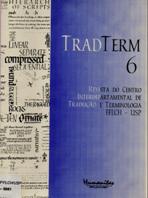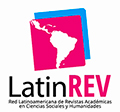Translating into Scots
DOI:
https://doi.org/10.11606/issn.2317-9511.tradterm.2000.49423Keywords:
Translation, visibility, dialect.Abstract
This article gives a brief survey of the history of literary translation into Scots, a language variety closely related to but distinct from English. The survey begins with the development of Scots into a literary medium in the late Middle Ages. Gavin Douglas's 16th Century Scots version of the Aeneid was for many years the only version of the full text available to readers of English or Scots, and its reputation remains undimmed today. However, translation into Scots did not fade away as Scotland was drawn into political union with England. Rather, translation into Scots survived as a means of asserting a distinctive national identity, first of all within the framework of the British union, and later in opposition to it. For example, in the 18th Century, the many Scots translations of Horace construct Scotland as a non-metropolitan, classical idyll, and some 20th Century translations seek alternative cultural alliances, not with post-imperial England, but with revolutionary Russia, and latterly with post-colonial cultures. The survey demonstrates clearly that translation into Scots has always been a visible, political act, which is closely tied to changing constructions of Scottish identity.Downloads
Download data is not yet available.
Downloads
Published
2000-12-18
Issue
Section
Translation
License
Autores que publicam nesta revista concordam com os seguintes termos:
- Autores mantém os direitos autorais e concedem à revista o direito de primeira publicação, com o trabalho simultaneamente licenciado sob a Licença Creative Commons Attribution BY-NC-SA que permite o compartilhamento do trabalho com reconhecimento da autoria e publicação inicial nesta revista.
- Autores têm autorização para assumir contratos adicionais separadamente, para distribuição não-exclusiva da versão do trabalho publicada nesta revista (ex.: publicar em repositório institucional ou como capítulo de livro), com reconhecimento de autoria e publicação inicial nesta revista.
- Autores têm permissão e são estimulados a publicar e distribuir seu trabalho online (ex.: em repositórios institucionais ou na sua página pessoal) a qualquer ponto antes ou durante o processo editorial, já que isso pode gerar alterações produtivas, bem como aumentar o impacto e a citação do trabalho publicado (Veja O Efeito do Acesso Livre).
How to Cite
Corbett, J. (2000). Translating into Scots. TradTerm, 6, 39-59. https://doi.org/10.11606/issn.2317-9511.tradterm.2000.49423








